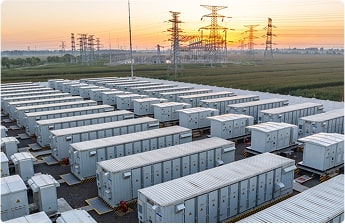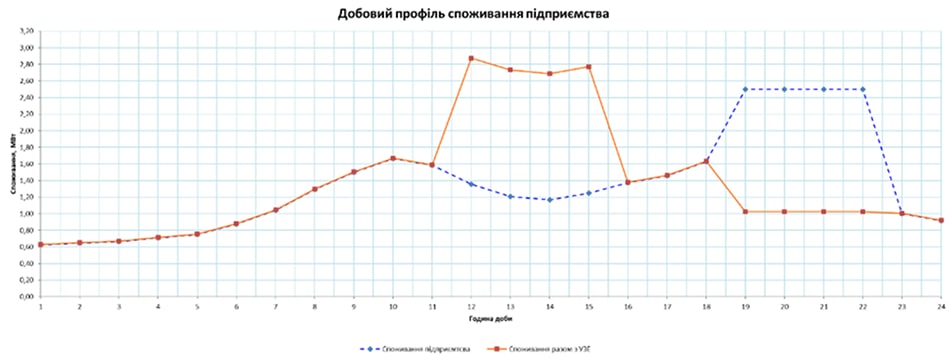Energy Storage Systems
Flexibility, efficiency and cost-effectiveness for business
Get a ConsultationWith IKNET, ESS projects get fast implementation,
significant savings and management flexibility

We take care of engineering and management so that implementation is risk-free and delivers clear results.
Our solutions integrate with the customer's energy assets: generation (RES, gas turbines, etc.) and consumption management systems.
The result is a ready-made system with stable operation and transparent payback.

Analysis of existing consumption or generation of the facility with selection of optimal ESS operation mode
Providing the investor with ready-made land plots for ESS installation or legal support for registration of a new plot
Development of ESS project business plan

Feasibility study and comparison of leading ESS manufacturers
Selection of optimal equipment and organization of deliveries to Ukraine
Design work for facility construction and connection to electrical networks

Regulatory Measures
Obtaining permits for facility construction
Licensing, certification and concluding agreements with TSO/DSO

System integrator services
Performing EPC contract functions (engineering, procurement, construction)
Full engineering and project implementation management
What do you get?
We are making the history of the energy storage market in Ukraine

Together with a leading Ukrainian energy company, implemented the first project in the ESS field: participation in design work
On the sites prepared by the company, over 200 MW of ESS are being built and have already been built.
Together with OKKO Group, implemented the first large industrial ESS in Ukraine (over 20 MW), which passed "Ukrenergo" certification.
IKNET supported the project at all stages: from site selection and complete design work to licensing, contracting and certification.
The company performs design work for facilities with a total capacity of over 350 MW

IKNET is a team with experience, expertise and its own approach to ESS implementation
What is ESS and why is it needed
Energy Storage System (ESS) is an electrical installation connected to the grid that accumulates energy and releases it when needed.
ESS charges when electricity is cheapest and releases it when demand is highest. This means lower costs, additional income and continuity of operation.

Income in the electricity market: DAM, IDM, BM.

Protection from penalties for imbalances in RES.

Optimization of electricity costs.

Resilience to outages and energy independence.

Connecting ESS to the grid with IKNET is simple
Location selection and connection scheme determination
Obtaining technical connection conditions
ESS connection to the grid
| Category | Capacity | Voltage |
|---|---|---|
| А1 |
≤ 0,15
MW |
< 110 kV |
| А2 |
0,15 - 1
MW |
< 110 kV |
| В |
1 - 20
MW |
< 110 kV |
| С |
20 - 75
MW |
< 110 kV |
| D |
> 75
MW |
< 110 kV |
Technical specifications that determine ESS efficiency
According to the Law of Ukraine dated 15.02.2022 No. 2046-IX and all current legislative acts of Ukraine in the field of industrial storage development, this term is currently used:
Energy Storage System (ESS) - electrical installation where energy storage takes place.
Previous name according to the Law of Ukraine dated 15.04.2021 No. 1396-IX:
Energy Accumulation System (EAS) – an electrical installation that includes energy storage equipment, engineering structures, energy conversion equipment and related auxiliary equipment, which is connected to the transmission system or electricity distribution system or power plant networks, or consumer networks for the purpose of drawing electrical energy, accumulation, conversion and storage of energy, as well as subsequent delivery of electrical energy to the transmission or distribution system of electrical energy or to power plant networks, or to consumer networks.
The concept of Battery Energy Storage System (BESS) or Energy Storage is used in European countries and corresponds to ESS.
how much energy can be stored and released
operating level of connection to the grid
allowable percentage of use without loss of resource
number of charge-discharge cycles
instant response to market needs
stable operation in Ukrainian conditions
energy losses during storage
affect site selection
determines charging speed
Global technologies adapted for Ukraine












Our approach is engineering, in which there are no accidents: from the first calculation to the system launch, we are responsible for every step.
CEO of IKNET
Yuriy Podolyak

0+
technical due diligence for energy projects
in traditional and renewable energy
0+ MW
implemented connection of facilities to external electrical networks
0+ MW
Together with OKKO Group, implemented the first industrial ESS in Ukraine

0+ MW
forecast electricity generation for facilities of this capacity



















 Investment Conditions:
Investment Conditions: Net Distribution
Net Distribution